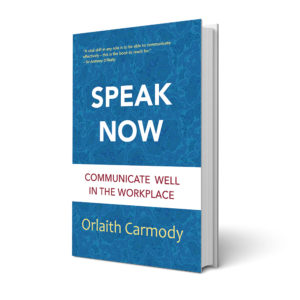Search CV or Resumé templates online and you will find any number of clear styles you can use to organise your information. A lot of it is down to personal preference. So I’ll leave you to do that in your own time, and will assume that you will choose a good layout and will proof read it well before your send it off. Here I want to focus on the content, what you say about yourself and how you say it.
Whatever layout style you choose should include the following.
- Your name in bold on the top – not the word CV or Resumé, we know that is what is in front of us
- A clear descriptive headline, such as a client focused job seeker, or a recently qualified engineer, or an experienced coder
- A small, professional looking head shot
- A paragraph on who you are and what you are looking for
- Your experience, most recent job first and working back
- Your education , most recent first and working back
- Key skills
- Interests
The purpose of the CV is to set the agenda for the subsequent interview you will hopefully get invited to. How do we set the agenda? By presenting the information in a way that invites a positive question. And how do we do that? By referencing everything we have done as a positive achievement, rather than by presenting the information in a negative way, or by listing duties and responsibilities.
Far too many CVs received by organisations list the tasks the applicant completes every week in their current or previous role. Firstly, those things are what you are paid to do, so why list them off? And secondly, it gives far too many jump off points to an interviewer, reducing your control over the subsequent exchange. The following two examples of what I mean are from a senior and a more junior job seeker.
The senior applicant has a long and successful career at top management level. One previous role was when, a number of years ago, she ran her own consultancy firm. In the first CV we considered she had presented the headline as “The global economic crisis in 2009 necessitated a change of career, so I established the consultancy firm, ABC Inc.”
And in the following detailed section she had “The services included Management, Finance, Accounting, Project Management, Procurement….” (and a lot more on a long list). This reads as a negative. Basically she is saying, “I had to set up a consultancy firm as I had nothing else on. I offered a whole range of services, in the hope that something would land.”
The first question the interviewer will ask is, What happened? Were you fired from your last role? And then the long list gives the interviewer far too many options to choose from. What do you know about finance? What do you know about Project Management? The interviewee will inevitably feel on the back foot throughout the process.
In the revised CV, we changed the headline to “Founded a strongly performing consultancy which achieved a powerful reputation and clients in the public and private sectors, including companies A, B, C and D”. We then listed achievements rather than services. “Became a key advisor to…; Designed and built a system for…..; Authored a report on….; Project managed a major acquisition for…..”
Now imagine the questions the interviewer will ask. “So you set up your own firm, how was that for you?” And the interviewee gets the opportunity to talk about understanding business from that perspective, as a practitioner in the field, not just from the viewpoint of someone who has worked within a large concern or corporation all their working lives. And the next question will be “Tell me about that acquisition you project managed, sounds very interesting”. The way the information has been presented on the CV has changed the whole tone of the encounter.
The more junior job seeker had spent five years in the service industry, and was now looking to move to a more office based or career role. She had tried that once before, and it hadn’t worked out, so she needed to present this information in a way that would read as a positive, not a negative. Here’s what we came up with. “Took a sabbatical from my long term role with Delvin Retail when selected for a three month internship with (big company) designed to allow young people from different backgrounds try out financial services”. And we listed her achievements as report writing, developing great office skills, learning about company investigation and so on.
She can now present this information in the context of someone curious, who landed a good opportunity and tried it out, but found it was not for her. So she took the learning back to her old role where her new understanding of business and finance supported the back end of the retail operation. She continued as a valued member of the team, but is now moving to a new location where she would like to use her experience, and her proven ability to work in a pressurised environment, to find a customer service role in an office setting. It is so important to be truthful on the CV, not to claim things you haven’t done, but it is perfectly acceptable to present your information in the best light, in order to set yourself up for a positive interview experience. And remember, do not say you love reading if you can’t discuss the last book you read.
Tip: Do not list current or past duties and responsibilities in a CV, you were paid to do those things. Present your information as achievements and learnings.

From Speak Now, Communicate Well in the Workplace.
Order your copy here
